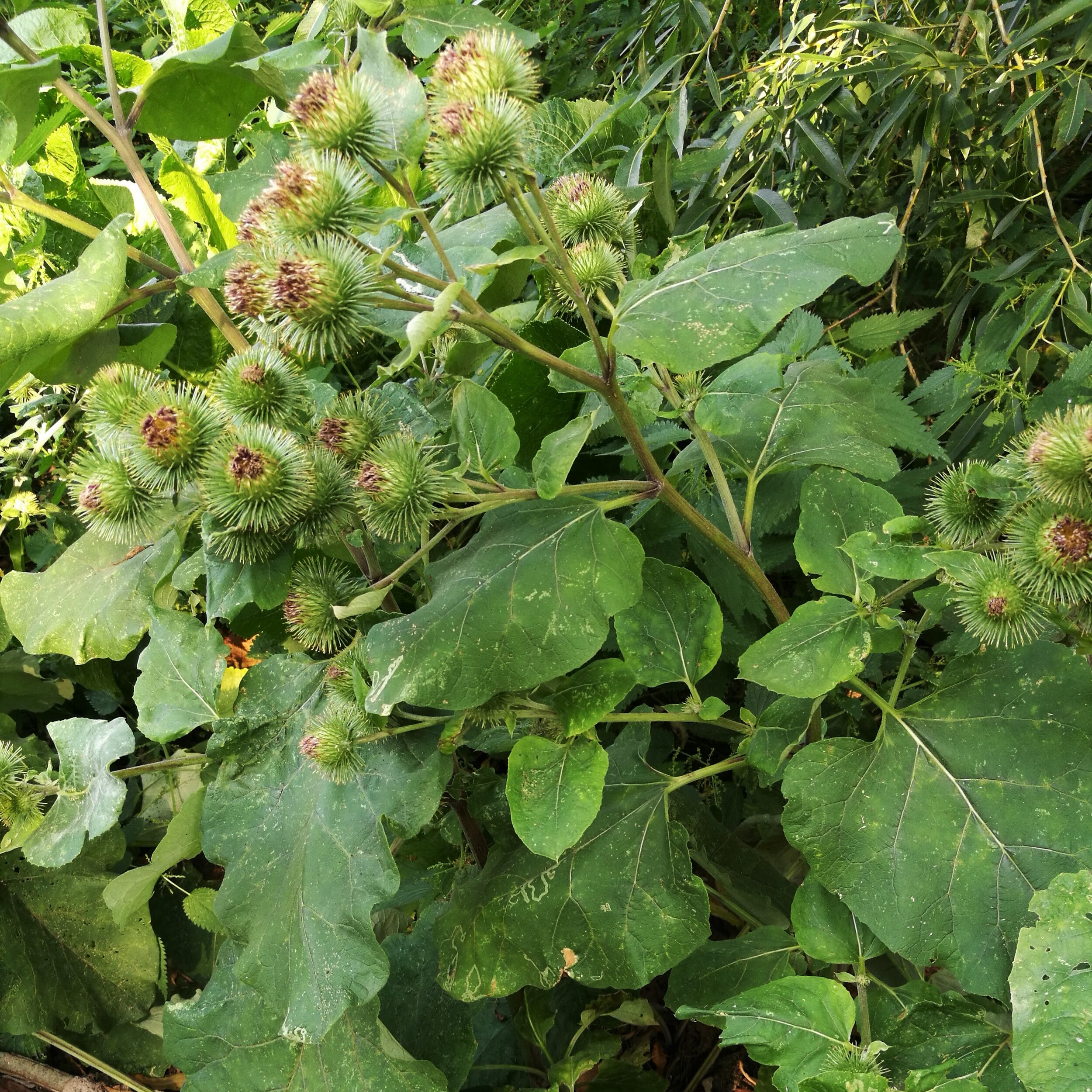Burdock (Arctium lappa)
Another plant that everyone should know. This is so common, whether native or invasive, across the world that it’s nearly impossible not to find. I remember my primary school teacher jokingly putting one of the hook-laden seed pods into my long hair when I was about 8, and the epic difficulty of extracting it again. We both came at it with good humour, but the memory has stuck as fastly as the burrs! It’s still typical for me to return from an autumn walk with one on me, somewhere. As common as it is, it’s also quite versatile in its use.
What it looks like
Look for burdock year round, but for harvesting, late summer and autumn. Burdock, a biennial, has two main phases of growth. In their first year, they remain close to the ground as a profusion of large, thick, almost rhubarb-like leaves, roughly heart shaped and funneling towards the stem, a crinkly texture and slightly toothed edge, with leaves easily over 30cm long, though often smaller as well. Their stems are chunky, and the overall colour is a bright green. In the second year, burdock puts up its flowering stem, which can be over 150cm tall, with clusters of thistle-like purple flowers that turn into burdock’s famous burr-covered spherical seed heads, which can be easily spotted through autumn and winter.
Uses
The large leaves in the first year of growth translate to a huge amount of energy stored in Burdock’s impressive white tap roots. There are two things you can do with these. Firstly, you can peel them and cook them up as you would a parsnip. Soak the taproots first to remove some of its bitterness. That bitterness, however, contributes to the second — and most famous — use for the burdock: roasted and ground as a coffee substitute. For this, dice and dry out the taproots, then roast until brown. You can then process them in a coffee grinder and use as you would freshly ground coffee. From experience, however, I think you get the best flavour by making ‘cowboy’ style coffee with burdock: simmer the grounds in the water until you get a good colour and flavour. This makes a brew that is quite pleasant to drink, healthful, with an earthy bitterness. You can have it black or with milk and sugar. Young flower stalks can also be eaten. Harvest these in spring. It tastes a bit like artichoke.
As with any plant where you are removing the root, be mindful of your impact on the area and only take a small amount from an area where plenty are growing. You might see it as an invasive and readily available plant, but the land cannot afford to feed everyone if all took what they pleased, and burdock are an important food source for birds and animals in your area. Harvest respectfully.



